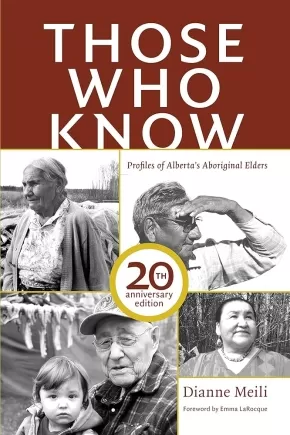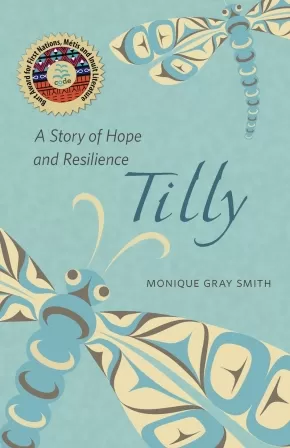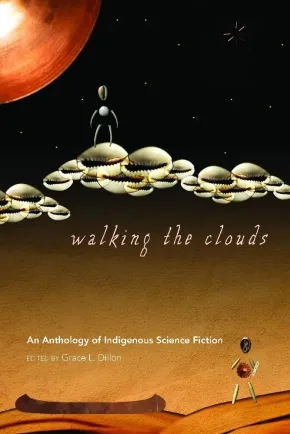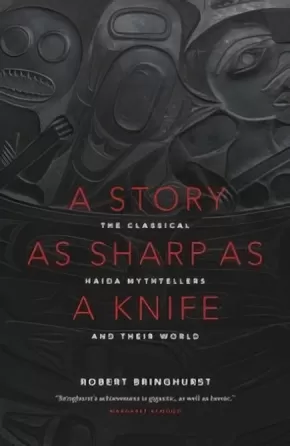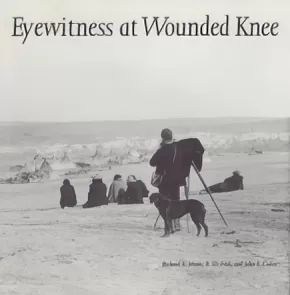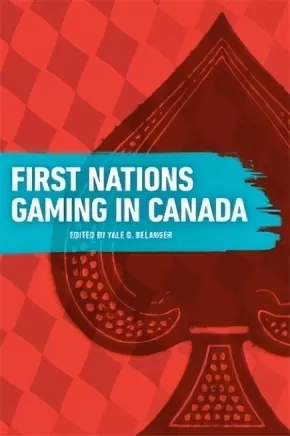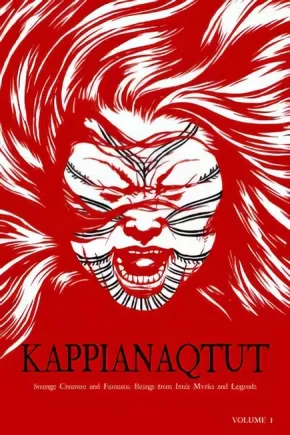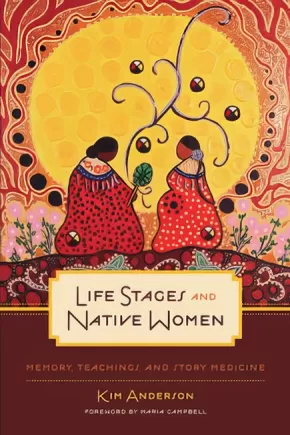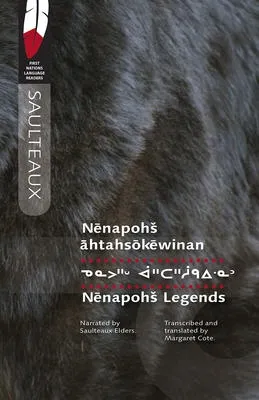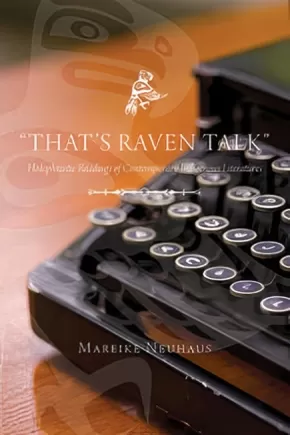Indigenous Studies
Synopsis:
The elders in Those Who Know have devoted their lives to preserving the wisdom and spirituality of their ancestors. Despite insult and oppression, they have maintained sometimes forbidden practices for the betterment of not just their people, but all humankind. First published in 1991, Dianne Meili’s book remains an essential portrait of men and women who have lived on the trapline, in the army, in a camp on the move, in jail, in residential schools, and on the reserve, all the while counselling, praying, fasting, healing, and helping to birth further generations. In this 20th anniversary edition of Those Who Know, Meili supplements her original text with new profiles and interviews that further the collective story of these elders as they guide us to a necessary future, one that values Mother Earth and the importance of community above all else.
Additional Information
312 pages | 6.00" x 9.00" | Paperback
Synopsis:
Tilly has always known she’s part Lakota on her dad’s side. She’s grown up with the traditional teachings of her grandma, relishing the life lessons of her beloved mentor. But it isn’t until an angry man shouts something on the street that Tilly realizes her mom is Aboriginal, too—a Cree woman taken from her own parents as a baby.
Tilly feels her mother’s pain deeply. She’s always had trouble fitting in at school, and when her grandma dies unexpectedly, her anchor is gone. Then Abby, a grade seven classmate, invites her home for lunch and offers her “something special” to drink. Nothing has prepared Tilly for the tingling in her legs, the buzz in her head and the awesome feeling that she can do anything. From then on, partying seems to offer an escape from her insecurities. But after one dangerously drunken evening, Tilly knows she has to change. Summoning her courage, she begins the long journey to finding pride in herself and her heritage. Just when she needs it most, a mysterious stranger offers some wise counsel: “Never question who you are or who your people are. It’s in your eyes. I know it’s in your heart.”
Loosely based on author Monique Gray Smith’s own life, this revealing, important work of creative non-fiction tells the story of a young Indigenous woman coming of age in Canada in the 1980s. With compassion, insight and humour, Gray Smith illuminates the 20th-century history of Canada’s First Peoples—forced displacement, residential schools, tuberculosis hospitals, the Sixties Scoop. In a spirit of hope, this unique story captures the irrepressible resilience of Tilly, and of Indigenous peoples everywhere.
Awards
- 2014 Burt Award Winner
Reviews
“What a gorgeous read! Reminiscent of Lee Maracle’s Will’s Garden and Ruby Slipperjack’s Little Voice, Tilly will bring strength, comfort and peace to all who read it. Let it discover and inspire you, too. Wow! I've been waiting for a book like this for years. Mahsi cho, Monique Gray Smith, for digging so deep to create something so loving and nurturing for the world.” —Richard Van Camp, author of The Lesser Blessed and The Moon of Letting Go
"Gray Smith intricately pieces together stories, traditional teachings and hard-earned personal wisdom, creating a hand-stitched quilt you can’t help but wrap yourself in—a quilt filled with optimism and the assurance that no matter how lost we are, hope, love and guidance surround us at every turn. Delicate with the handling of mature details, but fiercely candid with emotion, Tilly is an ideal resource not only for youth, but also for those who are easily triggered, while its universality will be appreciated by a wider audience. A brave new voice ready to take her place among the great contemporary storytellers, Gray Smith breaks her own trails as she explores what it means to be Indigenous in a modern world." —Christy Jordan-Fenton, author of Fatty Legs, A Stranger at Home and When I Was Eight
Educator Information
Recommended Ages: 15-18.
Grades 10-12 English First Peoples resource for units on Childhood through the Eyes of Indigenous Writers and Exploring Text through Local Landscape.
Additional Information
208 pages | Ages 14+
Synopsis:
In this first-ever anthology of Indigenous science fiction, Grace Dillon collects some of the finest examples of the craft with contributions by Native American, Canadian First Nations, Aboriginal Australian, and New Zealand Maori authors. The collection includes seminal authors such as Gerald Vizenor and Eden Robinson, historically important contributions often categorized as “magical realism” by authors like Leslie Marmon Silko and Sherman Alexie, and authors more recognizable to science fiction fans like William Sanders and Stephen Graham Jones. Dillon’s engaging introduction situates the pieces in the larger context of science fiction and its conventions.
Additional Information
272 pages | 6.00" x 9.00"
Synopsis:
A seminal collection of Haida myths and legends; now in a gorgeous new package.
The linguist and ethnographer John Swanton took dictation from the last great Haida-speaking storytellers, poets and historians from the fall of 1900 through the summer of 1901. Together they created a great treasury of Haida oral literature in written form.
Having worked for many years with these century-old manuscripts, linguist and poet Robert Bringhurst brings both rigorous scholarship and a literary voice to the English translation of John Swanton's careful work. He sets the stories in a rich context that reaches out to dozens of native oral literatures and to myth-telling traditions around the globe.
Attractively redesigned, this collection of First Nations oral literature is an important cultural record for future generations of Haida, scholars and other interested readers. It won the Edward Sapir Prize, awarded by the Society for Linguistic Anthropology, and it was chosen as the Literary Editor's Book of the Year by the Times of London.
Bringhurst brings these works to life in the English language and sets them in a context just as rich as the stories themselves one that reaches out to dozens of Native American oral literatures, and to mythtelling traditions around the world.
Synopsis:
In 1967, the Mushuau Innu — the Aboriginal people of Labrador — were resettled on Davis Inlet by the Canadian government. Originally a land-based people, this move to the coast created cultural, economic and spiritual upheaval, and Davis Inlet became synonymous with shocking substance abuse and suicide rates. In Bathtubs but No Water, Gerry Steele offers the reader a participant observer’s perspective on Davis Inlet. An employee of the federal government working with the Mushuau Innu since 1993, Steele explores their oral history of the resettlement process, substance abuse and deaths, and argues that these problems are a direct result of the government’s lack of respect for Aboriginal peoples. In 1992, the Innu tried to regain responsibility for their future, focusing on the traditions and strengths of their own community, but government bureaucracy would not support this partnership. Steele urges the government to engage in respectful partnerships with Aboriginal communities in order to achieve positive change.
Additional Information
|
Synopsis:
Beginning with an historic overview of legislative enactments defining Indian status and their impact on First Nations, the author examines contemporary court rulings dealing with Aboriginal rights and the Canadian Charter of Rights and Freedoms in relation to Indigenous identity. She also examines various band membership codes to determine how they affect Indigenous identity, and how their reliance on status criteria perpetuates discrimination. She offers suggestions for a better way of determining Indigenous identity and citizenship and argues that First Nations themselves must determine their citizenship based on ties to the community, not blood or status.
Additional Information
280 pages | 6.00" x 9.00"
Synopsis:
Many promote Reconciliation as a “new” way for Canada to relate to Indigenous Peoples. In Dancing on Our Turtle’s Back: Stories of Nishnaabeg Re-Creation, Resurgence, and a New Emergence activist, editor, and educator Leanne Simpson asserts reconciliation must be grounded in political resurgence and must support the regeneration of Indigenous languages, oral cultures, and traditions of governance.
Simpson explores philosophies and pathways of regeneration, resurgence, and a new emergence through the Nishnaabeg language, Creation Stories, walks with Elders and children, celebrations and protests, and meditations on these experiences. She stresses the importance of illuminating Indigenous intellectual traditions to transform their relationship to the Canadian state.
Challenging and original, Dancing on Our Turtle’s Back provides a valuable new perspective on the struggles of Indigenous Peoples.
Additional Information
168 pages | 5.50" x 8.50" | Paperback
Synopsis:
On a wintry day in December 1890, near a creek named Wounded Knee on the Pine Ridge Reservation in South Dakota, the Seventh Cavalry of the U.S. Army opened fire on an encampment of Sioux Indians. This assault claimed more than 250 lives, including those of many Indian women and children. The tragedy at Wounded Knee has often been written about, but the existing photographs have received little attention until now.
Eyewitness at Wounded Knee brings together and assesses for the first time some 150 photographs that were made before and immediately after the massacre. Present at the scene were two itinerant photographers, George Trager and Clarence Grant Morelodge, whose work has never before been published. Accompanying commentaries focus on both the Indian and the military sides of the story. Richard E. Jensen analyzes the political and economic quagmire in which the Sioux found themselves after 1877. R. Eli Paul considers the army’s role at Wounded Knee. John E. Carter discusses the photographers and also the reporters and relic hunters who were looking to profit from the misfortune of others.
For this Bison Books edition each image has been digitally enhanced and restored, making the photographs as compelling as the event itself. Heather Cox Richardson tells the story behind the endeavor to present a meaningful account of this significant historical event.
Synopsis:
While games of chance have been part of the Aboriginal cultural landscape since before European contact, large-scale commercial gaming facilities within First Nations communities are a relatively new phenomenon in Canada. First Nations Gaming in Canada is the first multidisciplinary study of the role of gaming in indigenous communities north of the 49th parallel. Bringing together some of Canada’s leading gambling researchers, the book examines the history of Aboriginal gaming and its role in indigenous political economy, the rise of large-scale casinos and cybergaming, the socio-ecological impact of problem gambling, and the challenges of labour unions and financial management. The authors also call attention to the dearth of socio-economic impact studies of gambling in First Nations communities while providing models to address this growing issue of concern.
Synopsis:
Each volume in the Kappianaqtut series provides readers with an in-depth academic examination of two mythological creatures from Inuit mythology. The series examines Inuit myths from an ethnographic perspective and fosters discussion on the variations and multiple representations of the myths and creatures in question.
This volume, which explores the giants of the North and the mother of the sea mammals, has been fully revised and updated.
Kappianaqtut represents the first book-length study of Inuit mythological beings written from a Northern perspective.
Synopsis:
A rare and inspiring guide to the health and well-being of Aboriginal women and their communities.
The process of "digging up medicines" - of rediscovering the stories of the past - serves as a powerful healing force in the decolonization and recovery of Aboriginal communities. In Life Stages and Native Women, Kim Anderson shares the teachings of fourteen elders from the Canadian prairies and Ontario to illustrate how different life stages were experienced by Métis, Cree, and Anishinaabe girls and women during the mid-twentieth century. These elders relate stories about their own lives, the experiences of girls and women of their childhood communities, and customs related to pregnancy, birth, post-natal care, infant and child care, puberty rites, gender and age-specific work roles, the distinct roles of post-menopausal women, and women's roles in managing death. Through these teachings, we learn how evolving responsibilities from infancy to adulthood shaped women's identities and place within Indigenous society, and were integral to the health and well-being of their communities. By understanding how healthy communities were created in the past, Anderson explains how this traditional knowledge can be applied toward rebuilding healthy Indigenous communities today.
Additional Information
|
Synopsis:
These seven tales are the traditional teaching stories of Nenapohs, the Saulteaux culture hero and trickster. Oral in origin, they have been passed on through generations by the traditional teachers, the Elders.
For the first time, they are published and made available in Nahkawewin or Saulteaux, the westernmost dialect of the Ojibwe language. Each story is illustrated and is presented in both Standard Roman Orthography and syllabics, with English translation. The book also includes a pronunciation guide and a Saulteaux-to-English glossary.
Educator & Series Information
Nenapohs Legends is part of the First Nations Language Readers series. With a mix of traditional and new stories, each First Nations Language Reader introduces an Indigenous language and demonstrates how each language is used today. The University of Regina Press’s long-term goal is to publish all 60+ Indigenous languages of Canada.
Additional Information
112 pages | 5.50" x 8.50" | Narrated by Saulteaux Elders, Transcribed and Translated by Margaret Cote
Synopsis:
“That’s Raven Talk”: Holophrastic Readings of Contemporary Indigenous Literatures is the first comprehensive study of North American Indigenous languages as the basis of textualized orality in Indigenous literatures in English. Drawing on a significant Indigenous language structure—the holophrase (one-word sentence)— Neuhaus proposes “holophrastic reading” as a culturally specific reading strategy for orality in Indigenous writing. In readings of works by Ishmael Alunik (Inuvialuit), Alootook Ipellie (Inuit), Richard Van Camp (Dogrib), Thomas King (Cherokee), and Louise Bernice Halfe (Cree), she demonstrates that (para)holophrases—the various transformations of holophrases into English-language discourse—textualize orality in Indigenous literatures by grounding it in Indigenous linguistic traditions. Neuhaus’s discussion points to the paraholophrase, the functional equivalent of the holophrase, as a central discourse device in Indigenous writing and as a figure of speech in its own right. Building on interdisciplinary research, this groundbreaking study not only links oral strategies in Indigenous writing to Indigenous rhetorical sovereignty, but also points to ancestral language influences and Indigenous rhetoric more generally as areas for future research.
Additional Information
336 pages | 6.00" x 9.00"| Paperback
Synopsis:
In 2008 the Canadian government apologized to the victims of the notorious Indian residential school system, and established a Truth and Reconciliation Commission whose goal was to mend the deep rifts between Aboriginal peoples and the settler society that engineered the system. In Unsettling the Settler Within, Paulette Regan, a former residential-schools-claims manager, argues that in order to truly participate in the transformative possibilities of reconciliation, non-Aboriginal Canadians must undergo their own process of decolonization. They must relinquish the persistent myth of themselves as peacemakers and acknowledge the destructive legacy of a society that has stubbornly ignored and devalued Indigenous experience. With former students offering their stories as part of the truth and reconciliation processes, Regan advocates for an ethos that learns from the past, making space for an Indigenous historical counter-narrative to avoid perpetuating a colonial relationship between Aboriginal and settler peoples. A powerful and compassionate call to action, Unsettling the Settler Within inspires with its thoughtful and personal account of Regan's own journey, and offers all Canadians -- Indigenous and non-Indigenous policymakers, politicians, teachers, and students -- a new way of approaching the critical task of healing the wounds left by the residential school system.
Synopsis:
Dr. Herman Michell has produced a practical, easy to follow, reader designed to provide both examples and suggestions so as to allow readers the ability to establish “a starting base from which they can develop their own ways of working with Elders…” (p. ii).
By exploring key Indigenous concepts, [i.e., definitions of Indigenous identity in Canada, Indigenous People and Indigenous knowledge; Indigenous worldview; who are Indigenous elders; etc.], Dr. Michell hopes to build cross-cultural bridges.
This book is a must read for anyone wishing to quickly obtain an understanding of what underlies Indigenous ways of perceiving.
Additional Information
Pages: 112 | Size: 6″ x 9

